by Lisa Cooke | Jul 9, 2014 | 01 What's New, Family Reunions, Inspiration, Social Media
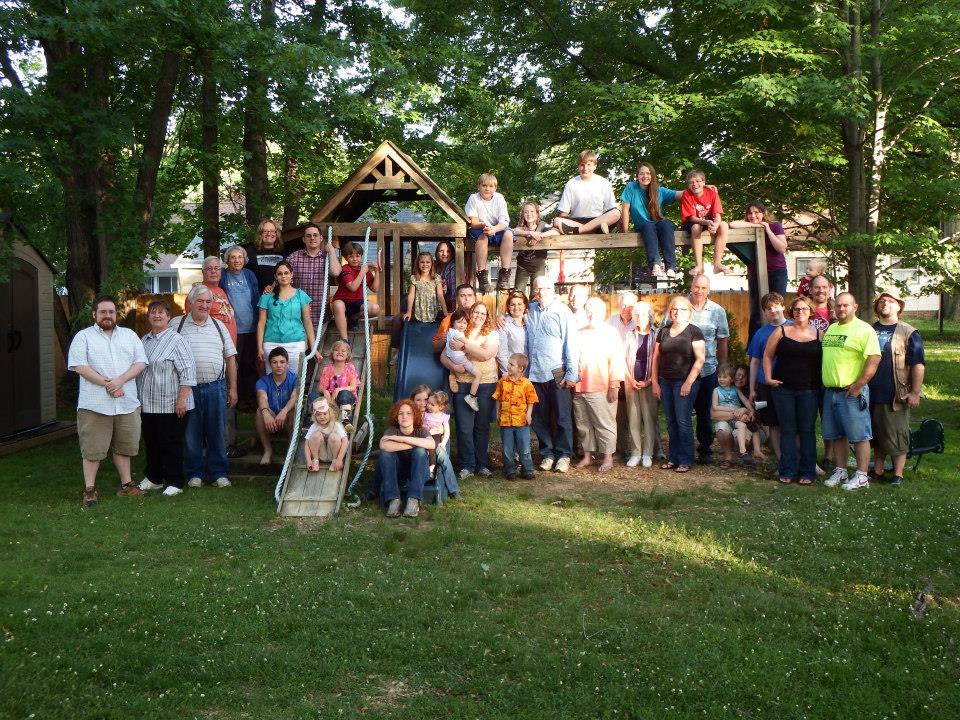
McClellan Family Reunion, Summer 2014, Cleveland, Ohio.
A couple weeks ago, I helped host 47 people at my family reunion here in Cleveland, Ohio. Local relatives made up about half the group: the rest flew and drove in from Arkansas, Nevada and Washington state. We spent 4 days splashing in Lake Erie, driving through the countryside, visiting an Amish-run cheese house and local historic sites, kayaking, hiking in the woods, wading in the sparkling shallows of the Cuyahoga River, and visiting, eating, and visiting some more (and then eating some more). The fundraising auction in my backyard raised such an ruckus that neighbors at the other end of the block asked what in the WORLD was going on at our house that night.
One of the most surprising things about the reunion–other than my brother’s natural gifts as a comedian-auctioneer–was the degree to which it worked to communicate on Facebook. My grandparents were the only ones we needed to actually call about all the reunion plans. We sent no letters–not one!
Here are my 9 tips for organizing your family reunion on Facebook (mostly.) Some of these we did well and others we’ll do better in the future:
1. Make sure at least one member of each nuclear family is active on Facebook. You want a significant percent of relatives participating. If you’re family just isn’t on Facebook, look for other ways to be in touch (group text?).
2. Create a family Facebook page. Click here to learn how. This lets your family post reunion- and family-related items in your own secure group.
3. Reserve the date up to a year in advance. Suggest a time frame and/or a few specific dates on Facebook. Tag everyone on the post to get them to notice and respond. However, you may not get much response. At least in our family, people tend not to volunteer or comment if they’re not personally, directly being asked about something urgent. Once you’ve given people a reasonable amount of time to comment on your suggested dates (and consulted those not on Facebook), JUST PICK A DATE. Then post it (and call the non-Facebookers). Again, tag everyone so you know they see it.
4. Start advertising immediately. Those who travel some distance may need more incentive to come. It’s especially helpful when you can convince the in-laws that they want to come. Do this by catering to people’s interests and hobbies. Post pictures of places you plan to visit together, images of recipes you plan to serve, the website of the local golf course/shopping district/historic site/art gallery/amusement park or any other local attraction that might persuade people to make the trip (whether this is officially part of the reunion activities or not). Tag people in those posts and include URLs to attraction websites: “Uncle Albert, I know how much you love to golf. Why don’t you stay for an extra day and play 18 holes on this championship course?” In the media world, this is called creating “buzz.”
5. Encourage long-distance relatives to introduce themselves and their families. My aunts and uncles were amazed at how much the kids had all grown. They see us so infrequently that it was super helpful to post the kids’ names, updated pix and interests before the reunion. That way, they could talk to my son about his cello playing and my daughter about her upcoming 8th birthday. We’ve asked everyone to start sharing family news and events on the family page, not just their own page. That way we can capture the highlights of all the big family milestones before the next reunion.
6. Play travel agent. Post information about the local airport, bus route, hotels, etc, several months in advance. Encourage relatives to share their hotel information so they can stay together (hotel pool party!) or coordinate travel plans.
7. Post details about the upcoming gathering. What should people plan to bring, wear and do? Do they need to bring beach wear, walking shoes, an umbrella, a baby picture of themselves, or a T-shirt to decorate? Tell them on Facebook ahead of time. Post the initial meeting place and time, along with its address (almost EVERYONE, including the over-60s used GPS to get around while they were here). You can hand out the rest of the itinerary at the reunion, if you need to.
8. Post DURING the reunion. Offer a prize for the best picture posted during the reunion (or the most pictures posted). That tells everyone at home what they’re missing while building excitement among attendees and preserving memories for the future. When uncles are tagging their nephews in photos (and vice versa), they’re building relationships. Remembering names. “Friend-ing.” I don’t suggest posting last-minute changes in plans: when traveling, not everyone makes Facebook-checking a priority. Only do this if everyone knows to check the Facebook page frequently during your gathering.
9. Follow up. Is everyone supposed to send a donation to the reunion fund afterward, mail a card to the great-aunt who couldn’t make it, or share all their reunion pictures on a photo-sharing site? Thank the reunion hosts, planners and those who sacrificed a lot (in time or money) to be present. When is the next reunion? Whoever’s planning the next one can pick up where you left off.
 Have you used Facebook to get the word out about a family reunion? Share your experiences and learning at our the Genealogy Gems Podcast Facebook Page.
Have you used Facebook to get the word out about a family reunion? Share your experiences and learning at our the Genealogy Gems Podcast Facebook Page.
by Lisa Cooke | Feb 24, 2017 | 01 What's New, Records & databases |
Find your Abuela (the Spanish word for Grandma) in a wide variety of Catholic Church records for Mexican genealogy at FamilySearch. Also in new and updated genealogical records, collections from Norfolk, England; Victoria, Australia; and Quebec, Canada.
Mexico – Church Records
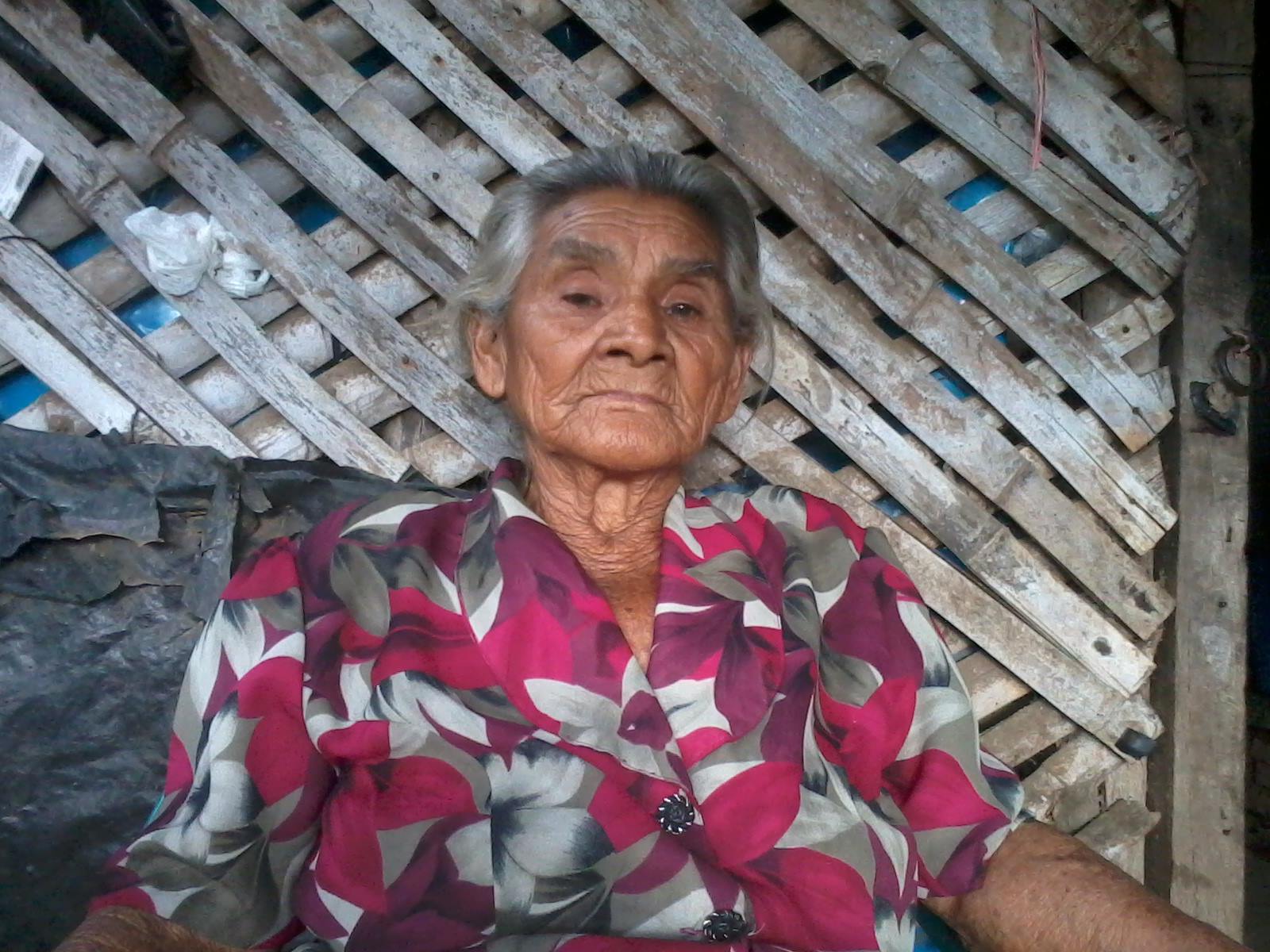
Abuela Francisca Ramos. Photo used with permission from the family.
FamilySearch has updated and added thousands of new Catholic church records in their Mexican genealogy databases. These church records cover many areas of Mexico, but in particular, the Hidalgo, Puebla, Jalisco, and Guanajuato databases have all reached over 1 million records. The years covered will vary, but the earliest records are from the 1500s and as recent as the 1970s.
These Catholic church records include baptismal records, marriage records, deaths, and other miscellaneous records that may contain valuable genealogical data for your ancestors. Check out the following databases for Mexican genealogy below:
England – Norfolk – Church Records
Several collections for Norfolk, England have been updated at Findmypast this week. Among them are first,
Norfolk Bishop’s Transcripts Baptisms 1685-1941. Norfolk Bishop’s transcripts for baptisms contain over 647,000 records. Each entry includes an image of the original document and a transcript of the vital details. The amount of information found in the transcript will depend on the age and condition of the original document. Most will include a name, baptism year, baptism place, and the names of parent’s. Images may reveal additional information such as your ancestor’s birth date, father’s occupation, and the name of the officiating minister.
The second database is titled, Norfolk Bishop’s Transcripts Marriages 1685-1941 and contains over 157,000 records. Each record includes a transcript and may include the birth year, date of marriage, place of marriage, and the name of their spouse as well as an image of the original document.
Thirdly, the Norfolk Bishop’s Transcripts Burials 1685-1941 collection will allow you to search over 434,000 Bishop’s transcripts of Norfolk burials to discover your ancestor’s final resting place. Transcripts will also reveal when they died and their age at death. Images of original documents may reveal additional information such as the name of the minister who performed the ceremony, your ancestor’s date of death and, occasionally, their cause of death.
Finally, the Norfolk Electoral Registers 1832-1915 containing over 4.5 million records may be just want you are looking for. Electoral registers were first created in 1832. Every year, a new electoral register was created to list the name of every individual eligible to vote. Voting was closely linked to the possession of property; therefore, the registers described the type of property owned or rented by the individual.
Electoral registers are an invaluable resource to trace your ancestors between the census years. Each entry in the Norfolk Electoral Registers 1832-1915 will include an image of the original register and a transcript of the facts listed. Transcripts will list your ancestor’s name, the place they registered, the district and the year they were registered. Images will provide additional information such as you’re their address and the type of property they owned or rented.
Australia – Victoria – Birth Records
Also at Findmypast, over 104,000 records have been added to the Victoria Births collection. These civil registration records may reveal your ancestors birth place, birth year, parent’s names and registration number. The entire collection now contains over 1.9 million records spanning the years 1837 t0 1917.
England & Scotland – Newspapers
Over 1.6 million articles and 13 brand new titles have been added to Findmypast’s collection of historic British Newspapers. The new additions cover the North West and South East of England, a number of Scottish counties, Nottinghamshire, and Bournemouth. The new Scottish titles include the Haddingtonshire Courier, Linlithgowshire Gazette, Ross-shire Journal, Rothesay Chronicle, Kinross-shire Advertiser, Peeblesshire Advertiser, and the Scottish Referee.
Canada – Quebec – Various Record Collections
The Drouin Institute has been in the genealogy business for over a hundred years. The Drouin Collection, which is available on Ancestry as well as on
GenealogyQuebec.com, was microfilmed in the 1940s and digitized in the 2000s by the Institute. The Drouin Collection contains the civil copy of all
parish registers (baptism, marriage, and burial records) from Quebec from 1621 to the 1940s. It is just one of many of the collections you will find from the Drouin Institute.
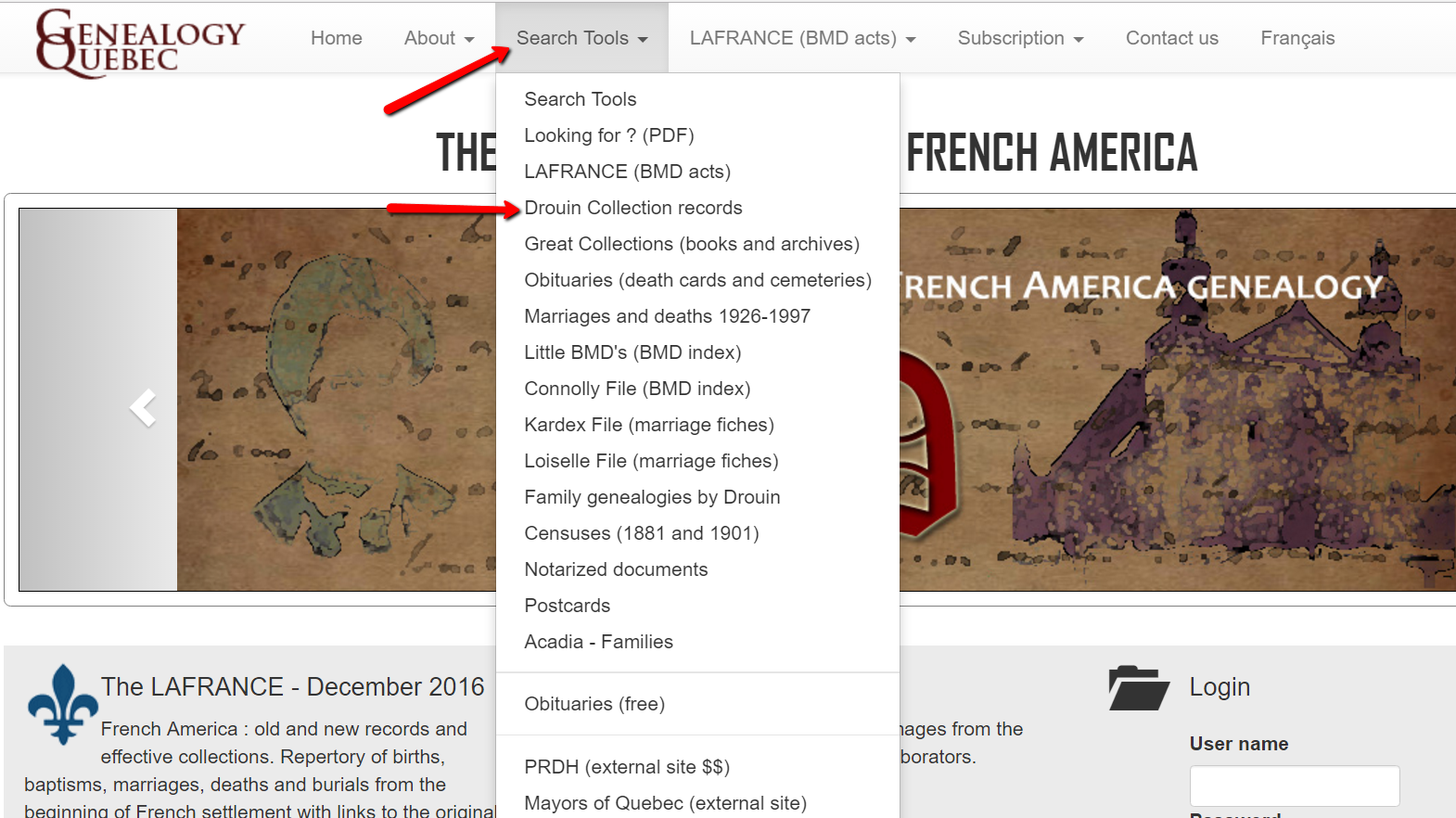
In total,
GenealogyQuebec.com offers many databases to research and reaches near 43 million images and files.
To access the Drouin Institute record collections, you will need to visit GenealogyQuebec.com. It is subscription based website. Subscription information can be viewed here.
LAFRANCE
The LAFRANCE is the most popular and comprehensive tool available at GenealogyQuebec.com. It is a very detailed, high quality index of the Drouin Collection, and also provides the original document. Here is an example of what the LAFRANCE looks like from our users’ perspective:
Currently, the LAFRANCE covers the entirety of the 1621 – 1849 period for Catholic baptisms and burials, as well as, the 1621-1916 period for Catholic marriages. In addition, the LAFRANCE covers the 1760 – 1849 period for Protestant marriages.
The LAFRANCE’s index is particularly valuable and appreciated by English speakers, as it negates the need to read and understand French in order to obtain all the relevant information from a record.
WWI Holdings
The Library of Congress has launched a comprehensive portal to its extensive WWI holdings. This one-stop portal is designed to help you search WWI subject material with ease. Search things like propaganda posters, letters, diaries, newspapers, and more. It is a wonderful site for not only the genealogist, but the avid historian as well.
More on Mexican Genealogy
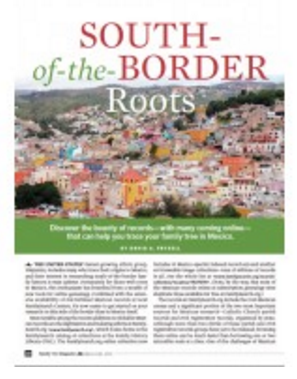 The Mexican Genealogy Guide by David A. Fryxell from Family Tree Magazine will help you discover the bounty of records in Mexico. This digital download will help you understand naming practices, pinpoint ancestral whereabouts, and how to best navigate church records there.
The Mexican Genealogy Guide by David A. Fryxell from Family Tree Magazine will help you discover the bounty of records in Mexico. This digital download will help you understand naming practices, pinpoint ancestral whereabouts, and how to best navigate church records there.
Disclosure: This article contains affiliate links and Genealogy Gems will be compensated if you make a purchase after clicking on these links (at no additional cost to you). Thank you for supporting Genealogy Gems!
by Sunny | Feb 9, 2018 | 01 What's New, African-American, Ancestry, FamilySearch, Freebies
Explore these African and African American genealogy records in celebration of your family history and Black History Month! Also this week: see new records online for Southern Claims Commission, GA, NY and VA as well as African heritage sites, Liberia and South...
by Lisa Cooke | Apr 1, 2014 | 01 What's New, Beginner, Family History Podcast, Vital Records

Listen to the Family History: Genealogy Made Easy podcast by Lisa Louise Cooke. It’s a great series for learning the research ropes and well as refreshing your skills.
Family History: Genealogy Made Easy Podcast
with Lisa Louise Cooke
Republished April 1, 2014
https://lisalouisecooke.com/familyhistorypodcast/audio/fh25.mp3
Download the Show Notes for this Episode
Welcome to this step-by-step series for beginning genealogists—and more experienced ones who want to brush up or learn something new. I first ran this series in 2008-09. So many people have asked about it, I’m bringing it back in weekly segments.
Episode 25: Using Civil Birth Records in Family History
In our last episode we covered marriage records. We finish up vital records in this episode by going back to the beginning: birth records.
There are two major categories: civil and church records. Today I’m bringing in professional genealogist Arlene H. Eakle, PhD, who will helps us to see the challenges we face and the success we can have locating civil birth records. (In Episode 26, Arlene will join me again to walk us through the world of church birth records.)
Here are some take-away tips from our discussion in this episode:
- When you start researching in a new area, learn when government birth records began to be kept. Every state and some cities began birth registration at different times. Today, in some states you order records before a certain date from the local government and more recent ones from the state vital records office. Do your research! Start with this Vital Records Chart from Family Tree Magazine.
- In the U.S., most government birth records were kept by the county, except in New England and independent cities. In the 20th century, the state took buy medication cart over jurisdiction of vital records in most states.
- Birth records often have the names of parents and child and the place and date of birth. You may also find parents’ birthplaces, marital status of parents and even the date of marriage.
- A single locale may have logged births in multiple sources, for example, for those who lived in or outside the city limits, or segregated records for blacks.
- The actual birth record may have been logged as part of a list of names on a columned form. Birth certificates are a modern thing!
- Some records have been digitized and indexed or microfilmed. Check the Family History Library catalog on FamilySearch.org first. If they have birth records, they’ll tell you whether they’ve been digitized or indexed on their site, or whether they’re available on microfilm.
- Of course, many birth records are also available on subscription websites like Ancestry.com, FindMyPast.com, MyHeritage.com and more. If you are a subscriber, check their online holdings, too.
- When ordering a birth record from a government office, they may type up a certificate to send you. That’s nice, but also ask for a photocopy of the original birth entry or record. There’s often more on the original record than the certificate—and you’ll minimize errors by looking at the real record.
Arlene H. Eakle, Ph.D., is the president and founder of The Genealogical Institute, Inc. and a professional genealogist since 1962. She holds both MA and Ph.D. in English History and an Associate degree in Nursing.
by Lisa Cooke | Dec 9, 2013 | 01 What's New, Apps, Conferences, Mobile
 Originally designed specifically for the iPad in 2010, the free Flipboard app has moved onto all the major mobile platforms. And this cool new technology has just gotten better with a big dose of genealogy!
Originally designed specifically for the iPad in 2010, the free Flipboard app has moved onto all the major mobile platforms. And this cool new technology has just gotten better with a big dose of genealogy!
I invite you to explore the newly released free Flipboard magazine RootsTech 2014: Where Genealogy and Technology Converge.
Genealogy Gems has published the magazine in conjunction with the RootsTech program team in a continuing effort to help family historians embrace new technologies and present RootsTech attendees with the possibilities.
Consider what’s been happening in the mobile space this last year:
- Smartphone usage in the U.S. increased by 50 percent (Kleiner Perkins)
- The number of emails being opened on mobile increased by 330 percent (Litmus)
- Tablet usage doubled in the U.S. (Pew Research Center)
The bottom line: More than ever folks are accessing websites, videos, podcasts, blogs and other online information on their mobile devices. That’s where the free Flipboard app comes in.
The free Flipboard app is a social-network and online aggregator of web content and RSS channels for Android, Blackberry 10, iOS, Windows 8, and Windows Phone 8. Content is presented in a captivating magazine format allowing users to “flip” through it with a simple swipe of the finger.
As a genealogy new media content creator and publisher, we’re excited to introduce a creative use of this emerging technology to the genealogy industry. RootsTech 2014: Where Genealogy and Technology Converge is a free magazine available at http://tinyurl.com/RootsTech2014. The magazine pulls together great web content from RootsTech speakers, exhibitors, and official bloggers in one beautiful and convenient place.
This magazine has presented an opportunity to crowd-source the know-how and talent of all of those who work to make RootsTech a success. The magazine offers an exciting look at the RootsTech experience the innovative technologies emerging in the genealogy industry, and a new vehicle for everyone in the RootsTech community to converge! The pages go beyond text and images by also delivering video and audio!
How to Access the Magazine in Flipboard:
- Get the free Flipboard app at flipboard.com, in iTunes or Google Play.
- Set up for your free account
- In the search box at the top of the homepage, search for ROOTSTECH
- Tap “RootsTech 2014” by Lisa Louise Cooke (you’ll see a magazine icon next to it.)
- When the magazine loads, tap the SUBSCRIBE icon at the top of the page
- Starting at the right hand side of the page, swipe your finger from right to left over each page to “flip!”
Looking for more great genealogy themed Flipboard magazines? Check out two more new issues from Lisa Louise Cooke:
Stay tuned to the Genealogy Gems Blog and Podcast for Lisa’s upcoming exclusive interview with the folks at Flipboard!
![]() Have you used Facebook to get the word out about a family reunion? Share your experiences and learning at our the Genealogy Gems Podcast Facebook Page.
Have you used Facebook to get the word out about a family reunion? Share your experiences and learning at our the Genealogy Gems Podcast Facebook Page. 

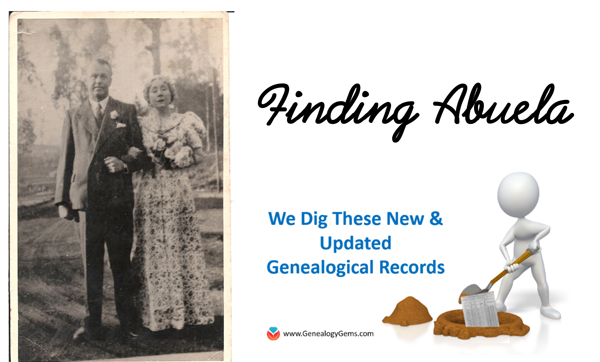


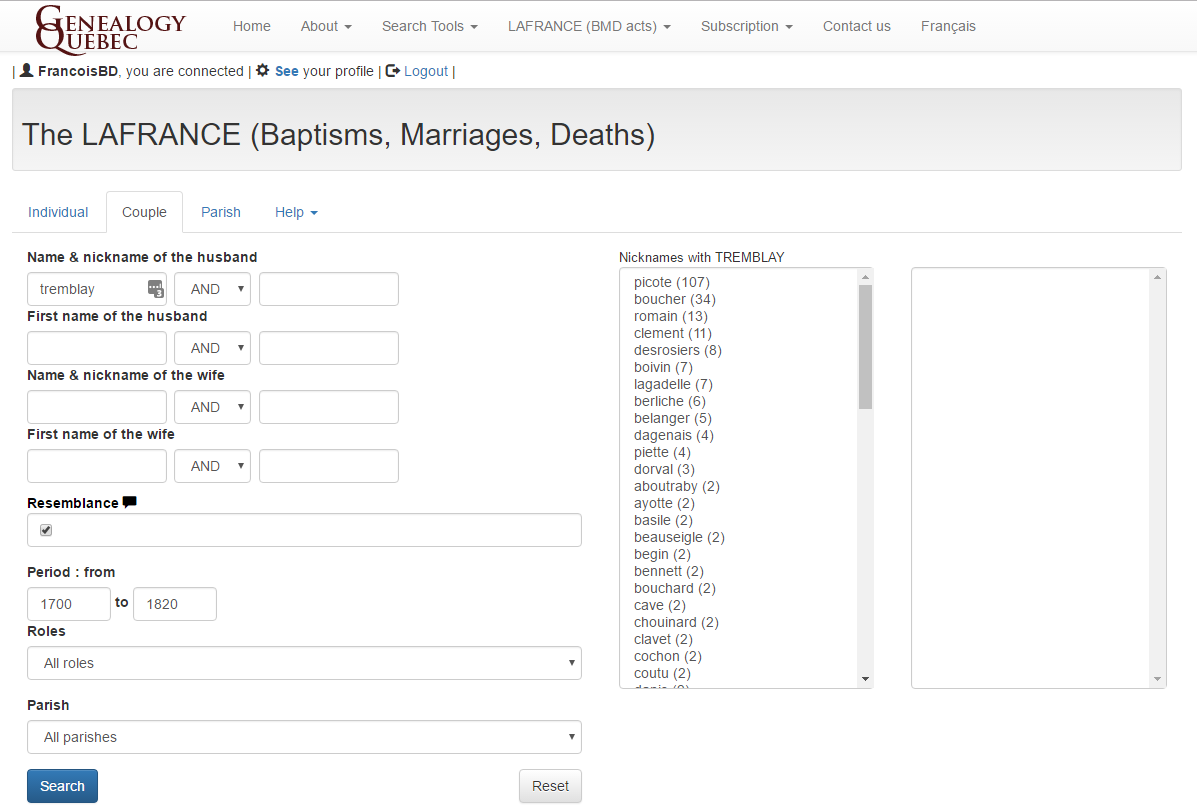
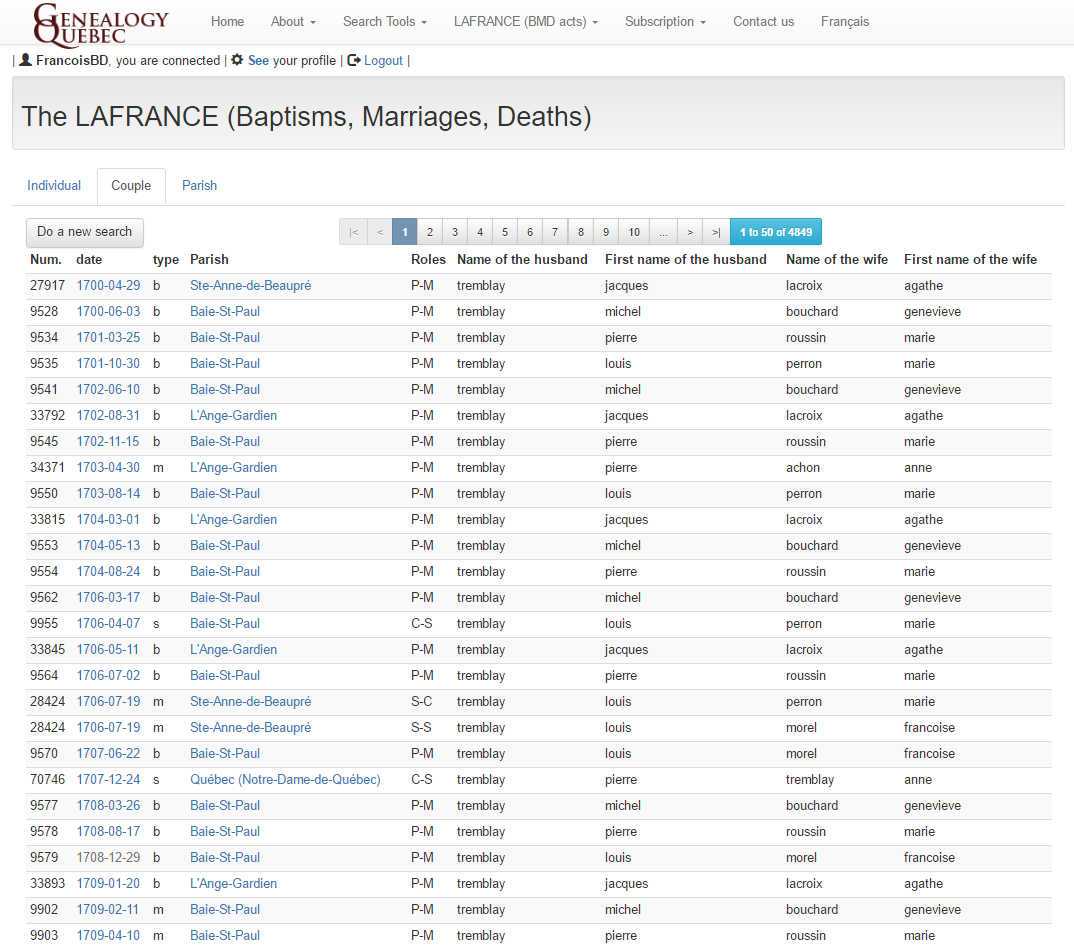
 The Mexican Genealogy Guide by David A. Fryxell from Family Tree Magazine will help you discover the bounty of records in Mexico. This digital download will help you understand naming practices, pinpoint ancestral whereabouts, and how to best navigate church records there.
The Mexican Genealogy Guide by David A. Fryxell from Family Tree Magazine will help you discover the bounty of records in Mexico. This digital download will help you understand naming practices, pinpoint ancestral whereabouts, and how to best navigate church records there.
